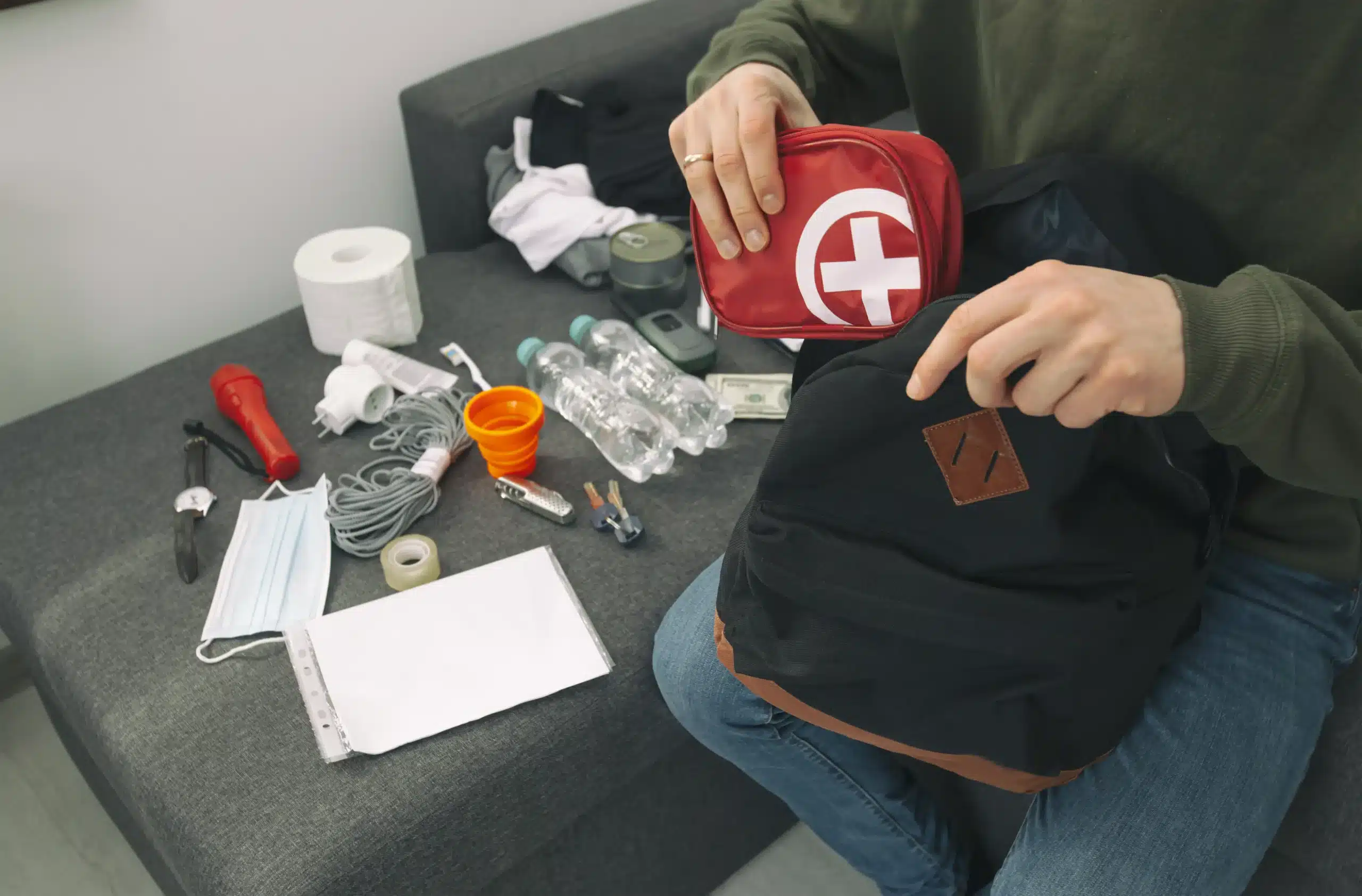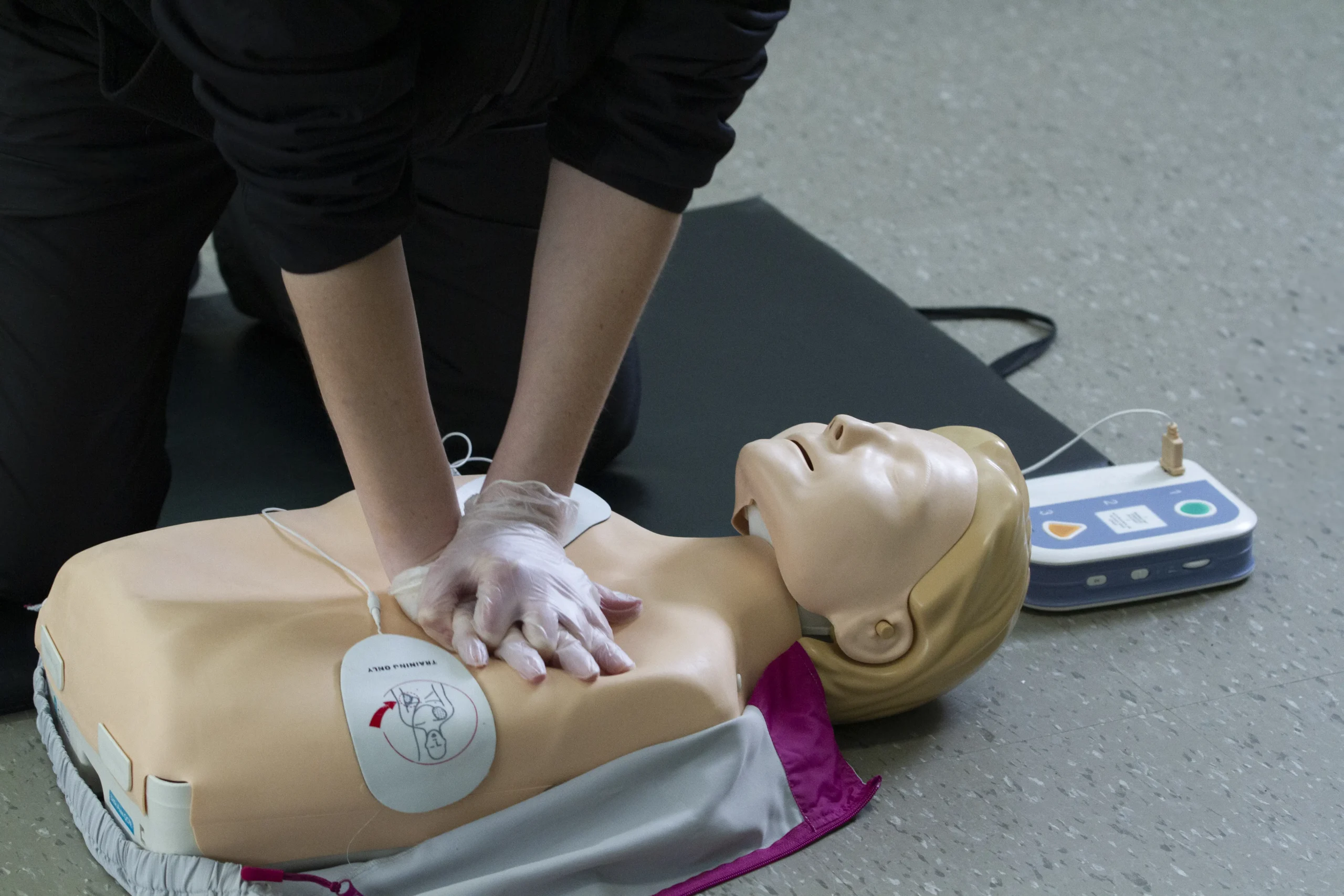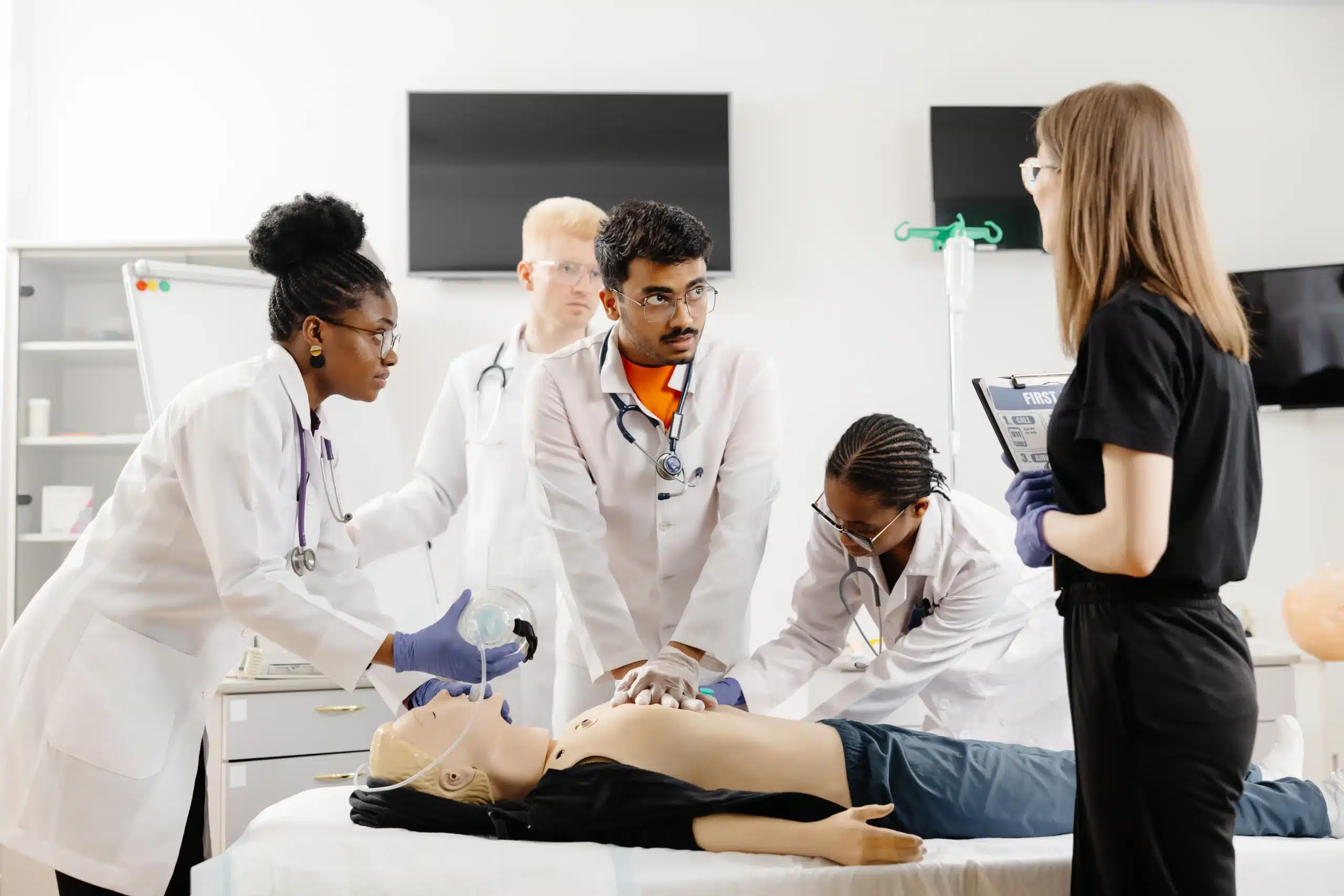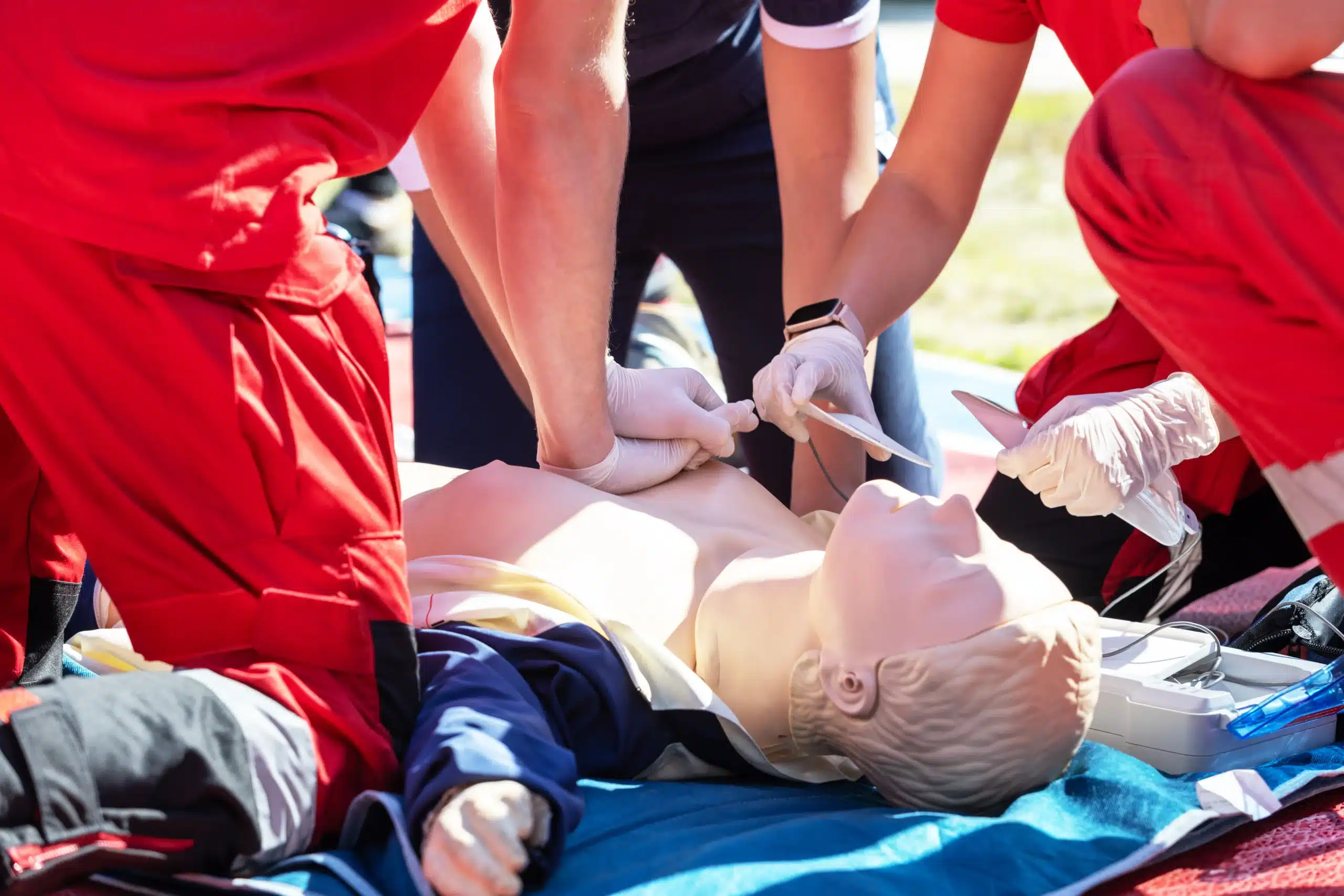Life is unpredictable, and medical emergencies can happen when we least expect them. Equipping yourself with first-aid training in Sacramento is a proactive step towards ensuring you’re prepared to handle these situations effectively. This guide explores the world of first aid, covering everything from basic wound care to life-saving techniques like CPR. We’ll discuss the various types of first aid courses available in Sacramento, the benefits of becoming trained, and how to choose the right course for your personal or professional goals. We’ll also delve into certification details, the importance of maintaining your skills, and how first aid knowledge can empower you to make a real difference in your community.
Key Takeaways
- First aid training equips you to handle emergencies: Learn essential skills to address various medical situations, from minor injuries to life-threatening events. Select a course that aligns with your needs, whether basic life support or specialized training.
- Select a reputable provider offering comprehensive, affordable training: Consider organizations like Safety Training Seminars, known for their low-price guarantee, or the American Red Cross. Evaluate course content, certification, and instructor expertise.
- Regular practice and refresher courses maintain your skills: First aid and CPR skills require upkeep. Practice consistently and pursue recertification to ensure you’re prepared for any emergency.
What is First Aid Training?
First aid training gives you the skills to help someone during a medical emergency. It teaches you how to assess injuries and illnesses and provide immediate care until professional help arrives. Even basic first aid knowledge can make a real difference in those critical moments before paramedics or other medical professionals get to the scene. Think of it as a bridge between the emergency and advanced care, offering essential support and potentially saving lives. First aid training empowers you to take action and provide immediate assistance when it matters most.
These programs cover a wide range of situations, from handling minor injuries like cuts and burns to responding to more serious events like heart attacks and strokes. You’ll learn how to control bleeding, manage allergic reactions, and help someone who’s choking. Solid first aid training also emphasizes critical thinking. It’s not just about memorizing steps; it’s about understanding how to assess each unique situation and adapt your response accordingly. Effective training teaches you to stay calm, think clearly, and make informed decisions under pressure, equipping you to handle a variety of emergencies.
First Aid Course Types
Choosing the right first aid course depends on your individual needs and goals. From basic lifesaving skills to advanced medical techniques, several first aid and CPR classes are available in Sacramento. Let’s explore some of the most common types.
Basic First Aid
Basic first aid courses cover essential skills to manage common injuries and emergencies. You’ll learn how to respond to situations like choking, burns, allergic reactions, and sudden illnesses like heart attacks or strokes. These basic first aid skills empower you to provide immediate care while waiting for professional medical help. This foundational knowledge is valuable for everyone, regardless of profession or background. Knowing how to stop bleeding or care for a burn can make a real difference in everyday situations.
CPR and AED Training
CPR (Cardiopulmonary Resuscitation) and AED (Automated External Defibrillator) training teaches you how to respond to cardiac emergencies. You’ll learn to perform chest compressions, rescue breaths, and operate an AED. The American Red Cross offers a variety of CPR and AED classes in Sacramento, with in-person, online, and blended learning options. These courses typically provide a two-year certification, often required for certain jobs and valuable for anyone wanting to be prepared.
Advanced First Aid
Advanced first aid training expands on basic skills, offering a deeper understanding of medical emergencies and more complex injuries. These courses often cover administering medication, managing severe bleeding, and using specialized equipment. Providers like The Knowledge Academy offer advanced first aid training suitable for those wanting in-depth knowledge and skills. This level of training is often pursued by healthcare providers, first responders, or those working in high-risk environments.
Specialized Courses (Pediatric, Workplace, etc.)
Specialized first aid courses address specific needs and environments. Pediatric first aid focuses on caring for infants and children, equipping parents, caregivers, and educators with age-appropriate responses. Workplace first aid covers common job-related hazards and teaches employees how to handle injuries specific to their industry. Safety Training Seminars offers a range of specialized courses, including certifications like BLS, ACLS, and PALS, designed for healthcare professionals and other specialized fields. Choosing a specialized course ensures you receive relevant, practical training for your particular situation.
Top Sacramento First Aid Training Providers
Finding the right first aid training provider is an important step. Here’s a look at some of your options in Sacramento:
Safety Training Seminars
Safety Training Seminars is a woman-owned American Heart Association (AHA) Training Center offering a range of certification courses, including BLS, ACLS, PALS, CPR, and first aid. They prioritize high-quality training at affordable prices, with a low-price guarantee for Sacramento County. Classes are conveniently offered seven days a week. They also provide specialized courses such as EMSA Child Care Health & Safety and RQI training. Safety Training Seminars serves Sacramento, Roseville, and Rocklin, CA.
American Red Cross
The American Red Cross is a well-known provider of first aid training in Sacramento. Their courses equip participants with essential skills to handle common emergencies, from choking and burns to allergic reactions, heart attacks, and strokes. The Red Cross offers various course levels, from basic to advanced, accommodating diverse needs and experience.
Local Community Colleges
Community colleges around Sacramento frequently offer first aid and CPR courses. These programs are typically accessible and affordable options for students and residents seeking essential lifesaving skills. Check with your local community college for specific offerings and schedules.
Hospitals and Medical Centers
Many hospitals and medical centers in Sacramento provide first aid training programs. While often geared towards healthcare professionals, some programs may be open to the public. Contact hospitals and medical centers near you for details on their training and potential opportunities for specialized instruction from experienced medical personnel.
First Aid Class Costs & Value
Knowing the price range for first aid training helps you budget and find the best value. This section breaks down average costs, highlights Safety Training Seminars’ commitment to affordability, and explores potential discounts.
Average Pricing
First aid and CPR class costs in Sacramento vary based on the training level and the provider. Basic first aid courses typically range from $75 to $125. Combined CPR and first aid classes often cost between $100 and $150. More advanced courses, like those for healthcare providers, can have higher prices due to the specialized content and longer class times. Remember, comprehensive training provides invaluable skills for emergency situations.
Safety Training Seminars’ Low Price Guarantee
Safety Training Seminars understands the importance of accessible training. They offer a low-price guarantee for their courses, striving to keep their prices the lowest in Sacramento County. This commitment makes quality training affordable. Combined with flexible scheduling and same-day certification, Safety Training Seminars is a top choice for individuals and groups in Sacramento, Roseville, and Rocklin. Check their website for the latest course pricing.
Discounts and Promotions
Many training providers, including Safety Training Seminars, offer discounts for groups, students, or returning clients. Look for special promotions or seasonal offers that can further reduce the cost. Safety Training Seminars’ dedication to providing affordable, high-quality CPR courses makes this essential training accessible. Contact them directly to inquire about current discounts.
Certification Details & Validity
CPR and first aid certifications, like those from the American Red Cross, are typically valid for two years. This timeframe helps ensure your skills and knowledge remain fresh. Let’s break down what that means for you.
Certification Duration
Most CPR certifications are valid for two years from the date they are issued. This standard two-year cycle keeps your life-saving skills current and aligned with the latest guidelines. At Safety Training Seminars, our certifications, including our BLS course, adhere to this two-year validity.
Renewal Requirements
Renewing your certification every two years is essential, as best practices and guidelines can change. Renewal usually involves a refresher course or retaking the full certification class. Check with your certifying organization, whether it’s Safety Training Seminars or another provider, about their specific renewal process. Staying current with your certification shows your commitment to providing effective and safe care.
Keep Certifications Current
Even if your certification is valid for two years, regular practice is key to maintaining your skills and confidence. Consider refresher courses or practice sessions even before your certification expires to stay sharp and better prepared for any emergency. Think of it like any other skill—the more you practice, the more confident and effective you’ll be. At Safety Training Seminars, we encourage students to review their training materials and consider our RQI classes to stay proficient.
Benefits of First Aid Training
Knowing how to help in a medical emergency is a powerful skill. First aid training gives you the tools to respond effectively and make a real difference when it matters most. Let’s explore some key advantages of becoming trained.
Personal Preparedness
First aid training empowers you to handle medical situations at home, work, or out in the community. Imagine knowing how to stop a bleed, treat a burn, or administer CPR to a loved one. This training provides valuable skills that can help you manage unexpected health crises until professional help arrives. It also encourages greater safety awareness, allowing you to identify and potentially prevent hazards. First aid training builds confidence and equips you to respond calmly and effectively under pressure.
Professional Development
In many healthcare roles, first aid certification is a requirement. Even outside of healthcare, having these skills can give you a competitive edge. First aid courses teach valuable skills like observation and quick assessment, useful in various professions. For those already working in healthcare, first aid training contributes to a more competent and efficient team, improving patient care and safety. Developing these skills can make healthcare workers more efficient in medical triage.
Community Safety
When more people in a community are trained in first aid, everyone benefits. Bystanders trained in CPR and first aid can provide immediate assistance during emergencies, potentially saving lives before professional responders arrive. CPR and first aid training creates a network of skilled individuals ready to help, fostering a safer environment. This is especially valuable in a growing city like Sacramento, where being prepared can make a significant difference.
Confidence in Emergencies
One of the greatest benefits of first aid training is the confidence it instills. Effective programs emphasize critical thinking and problem-solving, teaching you to assess situations quickly and adapt your skills to different scenarios. Improving first aid training focuses on developing these skills so you can respond effectively in various emergencies. This confidence can be invaluable, allowing you to take charge and provide vital assistance when it’s needed most.
What to Expect in a First Aid Class
Knowing what to expect can help you feel prepared and confident going into your first aid training. A typical class blends instruction, hands-on practice, and assessment to ensure you gain both the knowledge and the skills to respond effectively in emergencies.
Classroom Instruction
First aid classes begin with instruction covering a range of common medical emergencies. You’ll learn how to recognize and respond to situations like choking, burns, allergic reactions, heart attacks, and strokes. The curriculum also often includes injury management, such as how to control bleeding and care for wounds. This foundational knowledge equips you with the ability to assess a situation and provide appropriate initial care. For more information on what first aid covers, check out the Red Cross’s overview.
Hands-on Practice
In-person first aid training goes beyond the textbook. You’ll actively participate in hands-on scenarios, practicing the skills you learned in the classroom. This practical experience is essential for building confidence and competence in real-life situations. You’ll get to apply techniques like CPR and bandaging under the guidance of a certified instructor. This hands-on component is crucial for solidifying your understanding and preparing you to respond effectively under pressure. The Red Cross emphasizes hands-on training in their Sacramento CPR classes.
Assessment and Certification
After completing the classroom instruction and hands-on practice, you’ll undergo an assessment to demonstrate your understanding and proficiency. This typically involves a written exam and practical skills demonstration. Upon successful completion, you’ll receive your first aid certification card, often the same day. This certification is usually valid for two years and meets workplace safety standards (OSHA). For details on certification in Sacramento, CPR Sacramento offers helpful information. Remember to keep your certification current to maintain your skills and qualifications.
Key First Aid Skills & Knowledge
This section covers the core skills and knowledge gained through first aid training, empowering you to handle various medical emergencies. Whether you’re a healthcare professional, a childcare provider, or simply want to be prepared, understanding these fundamentals is crucial.
Basic First Aid Techniques
Basic first aid equips you with the skills to assess an injured person, determining the severity of their condition and the appropriate course of action. You’ll learn to apply direct pressure to control bleeding, a critical skill in preventing excessive blood loss. Stabilizing injured limbs is another essential technique, minimizing further injury and promoting comfort until professional help arrives. These foundational first aid skills form the basis for providing immediate care in any emergency.
CPR and AED Use
CPR (Cardiopulmonary Resuscitation) is a life-saving technique used when someone’s heart stops beating. You’ll learn to perform chest compressions and rescue breaths, restoring blood circulation and oxygen flow. AED (Automated External Defibrillator) training teaches you to use this device to deliver an electric shock, potentially restoring a normal heart rhythm. Combined, CPR and AED use significantly increase the chances of survival in cardiac arrest cases.
Choking Relief
Choking can be a life-threatening emergency, and knowing how to respond quickly can make all the difference. First aid training covers various techniques for relieving choking in both adults and children, including the Heimlich maneuver. These skills empower you to act decisively and effectively. This information on choking management for nurses highlights its importance as a key first aid skill.
Wound Management & Bleeding Control
Proper wound management is essential for preventing infection and promoting healing. First aid training covers cleaning and dressing wounds, as well as techniques for controlling bleeding. You’ll learn to recognize signs of infection and when to seek further medical attention. Understanding these principles is vital for anyone working in healthcare and beneficial for personal preparedness. This article discusses the importance of first aid for healthcare workers, emphasizing wound management.
Recognize & Respond to Medical Emergencies
Beyond specific techniques, first aid training teaches you to recognize and respond to various medical emergencies. From heart attacks and strokes to allergic reactions and seizures, you’ll learn to assess the situation, provide initial care, and activate emergency medical services. Developing this ability to think critically and adapt your skills is crucial. Consider this advice on improving first aid training to enhance your preparedness.
Choose the Right First Aid Course
Finding the right first aid course takes a little planning. Think about why you want the training, compare what different providers offer, and consider what works with your schedule.
Assess Your Needs
First aid training gives you the skills to handle emergencies. Before signing up for a class, ask yourself a few key questions. Do you want basic life support skills for personal use? Do you need certification for your job? Figuring out your needs will help you choose the right course. For example, healthcare providers often need certifications like Basic Life Support (BLS), Advanced Cardiovascular Life Support (ACLS), or Pediatric Advanced Life Support (PALS). Someone working at a summer camp might need a more general first aid and CPR certification. Childcare providers may need to fulfill specific requirements, like those in the EMSA Child Care Health & Safety program.
Compare Course Offerings
Once you know what you need, start comparing courses. Look at what different organizations offer. Safety Training Seminars offers American Heart Association courses covering various certifications, including BLS, ACLS, PALS, CPR, and First Aid. The American Red Cross also provides first aid and CPR training. See what each organization includes and the type of certification they offer. Consider adding RQI classes to your training.
Consider Scheduling
Finally, think about your schedule. How much time can you dedicate to a first aid course? Safety Training Seminars offers classes seven days a week, helpful for busy schedules. Find a course that fits your availability and offers convenient scheduling. Also, consider the training center’s location. Is it easy to reach? These details can make a big difference. Check if the training center serves your area. Safety Training Seminars serves Sacramento, Roseville, and Rocklin, CA. For the most affordable option, check out Safety Training Seminars’ Low Price Guarantee, the lowest prices in Sacramento County.
Maintain & Apply Your First Aid Skills
Learning first aid is an ongoing process. Even after completing a comprehensive course, staying sharp and confident in your abilities requires consistent effort. This section explores how you can maintain and apply your first aid skills effectively.
Regular Practice & Refresher Courses
First aid training doesn’t need to consume your life. A few hours of training equips you with the skills and confidence to handle emergencies, take charge, and potentially save a life. Think of it as an investment in yourself and your community. Regular practice is key to retaining these vital skills. Consider setting aside time each month to review key techniques like CPR and choking relief. Skills can fade over time, so refresher courses are a smart way to stay current. The American Red Cross offers a variety of refresher courses to help you maintain your skills. Remember, even if your certification has expired, attempting CPR in an emergency is always better than doing nothing.
Real-Life Applications in Sacramento
First aid knowledge becomes truly valuable when applied in real-world scenarios. Sacramento CPR and first-aid classes provide comprehensive training relevant to various emergencies. Imagine encountering a car accident on your way to work or witnessing a medical emergency at a local park. Your training could make a critical difference. Reading true stories about first aid can offer valuable insights into how these skills are used every day. Many courses also incorporate real-world simulations to help you prepare for the unexpected. For example, Pro CPR offers classes that include realistic scenarios. This practical experience builds confidence and helps you react effectively under pressure.
Related Articles
- First Aid Training Sacramento: A Comprehensive Guide – Sacramento CPR Classes
- First Aid Training in Roseville: A Complete Guide – Sacramento CPR Classes
- CPR Classes in Sacramento: The Complete Guide – Sacramento CPR Classes
- CPR Training in Sacramento: Your Guide – Sacramento CPR Classes
- Pediatric CPR & First-Aid Training in Sacramento – Sacramento CPR Classes
Frequently Asked Questions
What’s the difference between basic first aid and advanced first aid?
Basic first aid covers common injuries like cuts, burns, and sprains, and how to handle emergencies like choking or allergic reactions. Advanced first aid goes deeper, covering more complex situations and potentially involving administering medication or using specialized equipment. It’s often for people working in healthcare or high-risk environments.
How much do first aid and CPR classes typically cost in Sacramento?
Prices vary depending on the type of course and the provider. Basic first aid can range from $75 to $125, while combined CPR and first aid classes are usually between $100 and $150. More specialized or advanced courses tend to be more expensive. It’s always a good idea to check with specific providers like Safety Training Seminars or the American Red Cross for their current pricing. Safety Training Seminars offers a low-price guarantee for Sacramento County, so they’re worth checking out for the best value.
How long are first aid and CPR certifications valid, and how do I renew them?
Most certifications are valid for two years. Renewing usually involves taking a refresher course or retaking the full certification class. Check with your certifying organization (like Safety Training Seminars or the American Red Cross) for their specific renewal process. Even if your certification hasn’t expired, regular practice and occasional refresher courses are a good idea to keep your skills sharp.
What kind of first aid training is best for me?
The best type of training depends on your individual needs. If you’re looking for general knowledge and preparedness for everyday emergencies, a basic first aid and CPR course is a great starting point. If you work in healthcare, childcare, or another field with specific requirements, look for specialized courses that meet those needs. Think about your current skills, your job requirements, and any specific situations you want to be prepared for.
What can I expect during a typical first aid class?
Most classes combine classroom instruction with hands-on practice. You’ll learn about different medical emergencies and how to respond, then practice those skills in simulated scenarios. There’s usually an assessment at the end, often involving a written test and a practical skills demonstration. After successfully completing the course, you’ll receive your certification.








